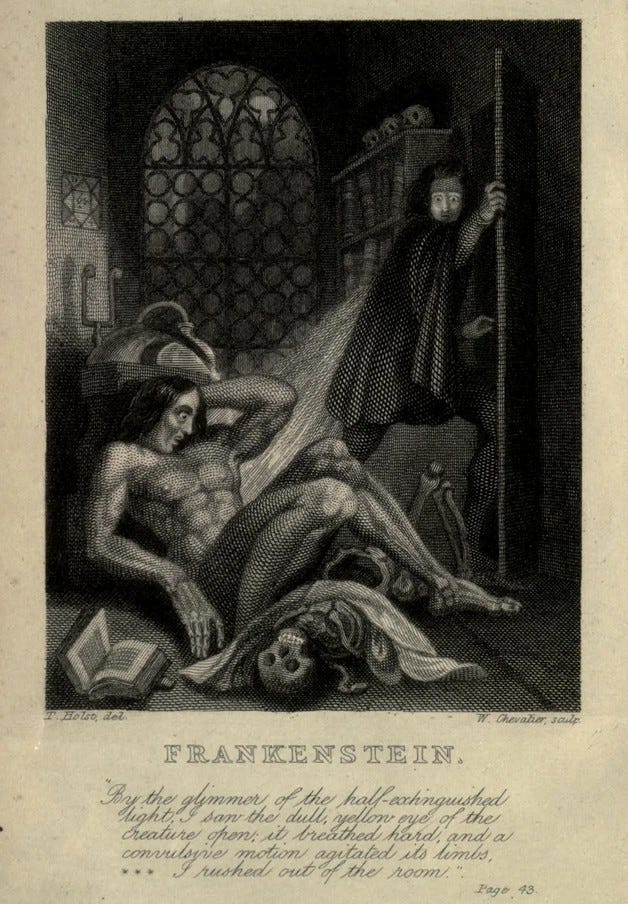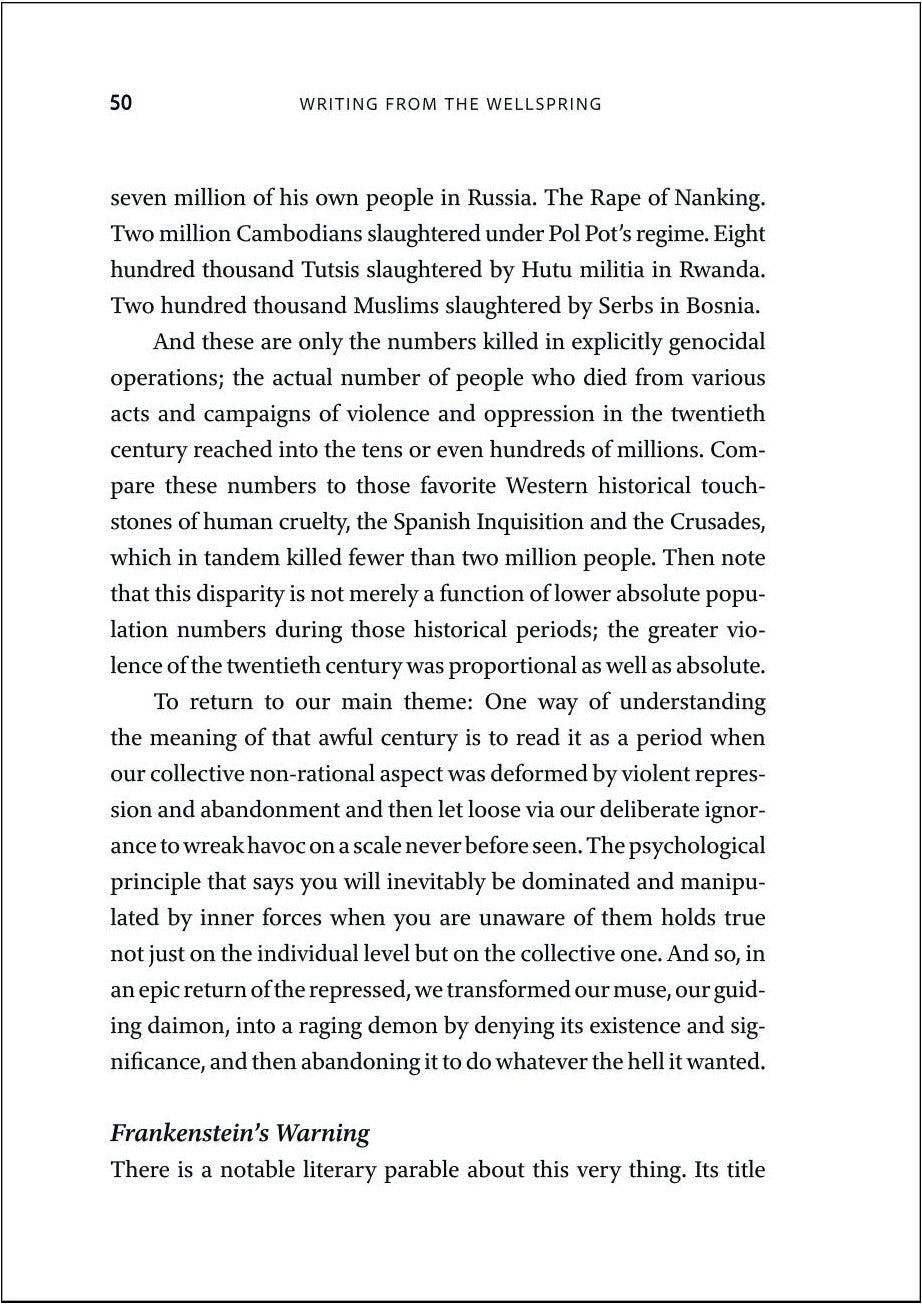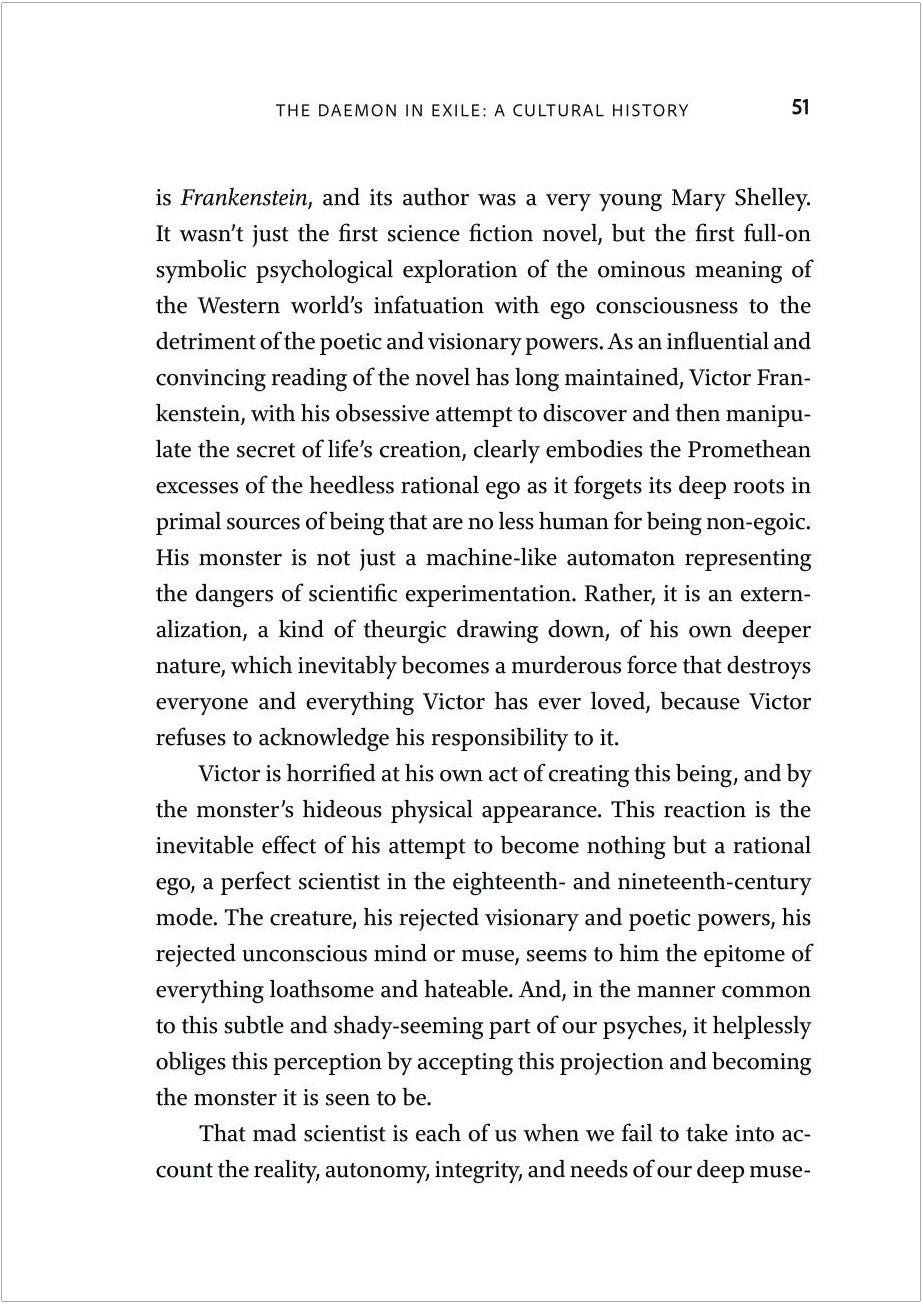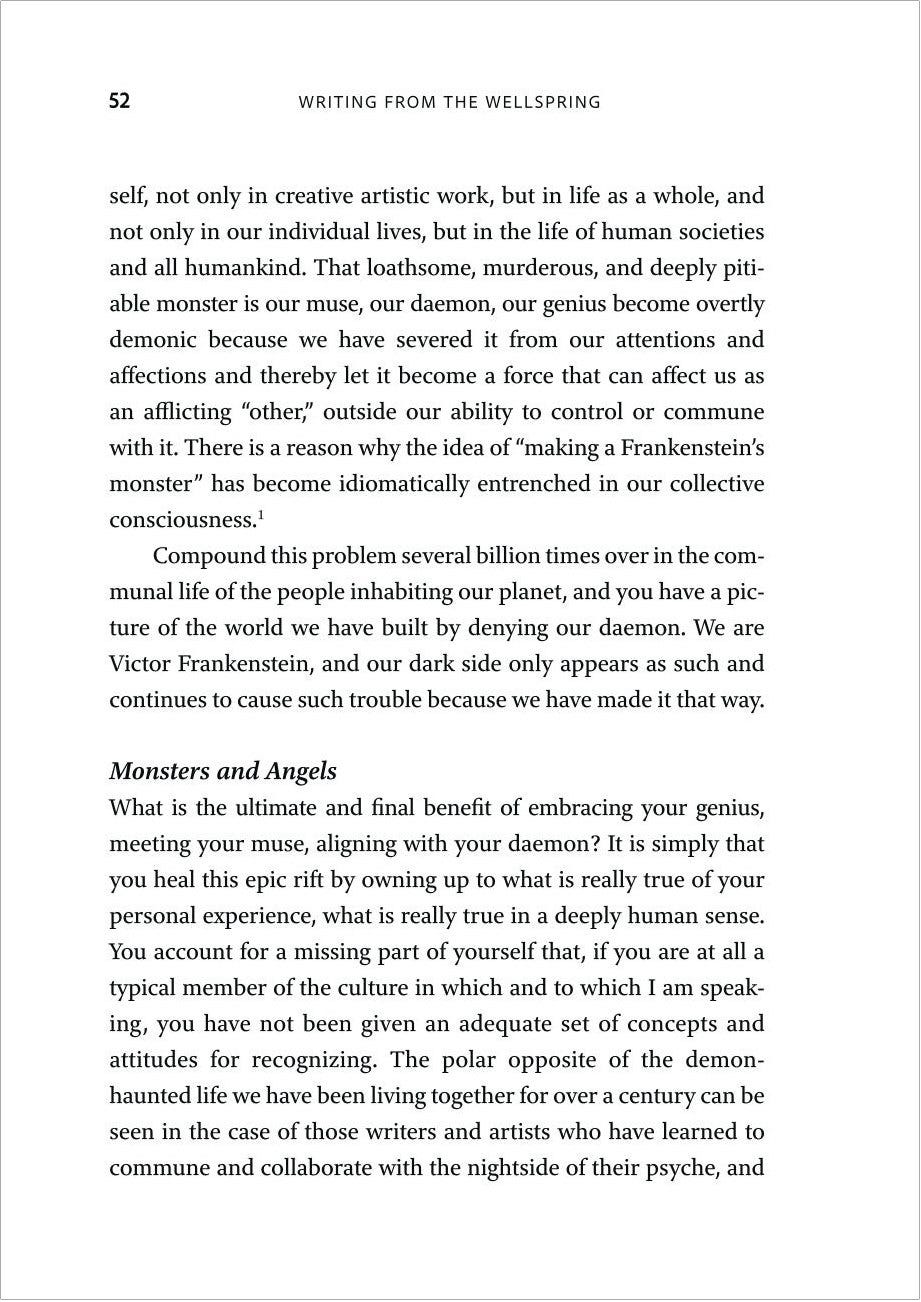Frankenstein's Warning: Don't Deny Your Daemon
The muse, the monster, and Mary Shelley's prophetic vision

Dear Living Dark reader,
With Guillermo del Toro’s Frankenstein debuting on Netflix this week, I’ve been reflecting again on why Mary Shelley’s creation myth has haunted me for so many years, and why it occupies an important place in Writing at the Wellspring. Below are three pages from the book, including an excerpt titled “Frankenstein’s Warning,” that explore how Mary’s novel serves as a parable for our collective estrangement from the daemon, the muse, the inner source of creative and spiritual power.
In Wellspring I argue that Victor Frankenstein’s tragedy isn’t merely scientific hubris; it’s psychological repression. His “monster” is the banished half of his own soul, the poetic and visionary depth he refused to honor. Denied and abandoned, that power inevitably turns destructive when he tries to actualize it in an act of creation. These pages feel especially relevant now, when not only has del Toro reimagined the story for a new generation, but daemonic fury is pretty evidently running rampant around the world outside the confining artistic boundary of a movie or television screen. This theme also resonates with the wider purpose of Writing at the Wellspring: to help heal the ancient rift between reason and imagination, angel and demon, ego and deep self.
Preorders for the book open soon. Publication remains on track for December 15. An online launch celebration is also in the works at Weirdosphere, hosted by my friends at the Weird Studies community.
For those who would like to explore more of my long engagement with Shelley’s vision, see my essay “Those Sorrows Which Are Sent to Wean Us from the Earth: The Failed Quest for Enlightenment in Mary Shelley’s Frankenstein” in What the Daemon Said.
Warm regards,






Wonderful piece ! I'm currently reading another work following a parallel course on this theme - Cosmos and Psyche - by Richard Tarnas, a philosopher / cultural historian. There is much need at this critical time in our collective zeitgeist, to re-vivify our connection and rapport with the World Soul - wonderful that your voice comes forward at this time.
Wow. I'm so excited to discover your writing, Matt. I look forward to reading much more. This resonates strongly with me. Not even sure where to start. I'm going to explore more of your content here and order your book! Thank you.